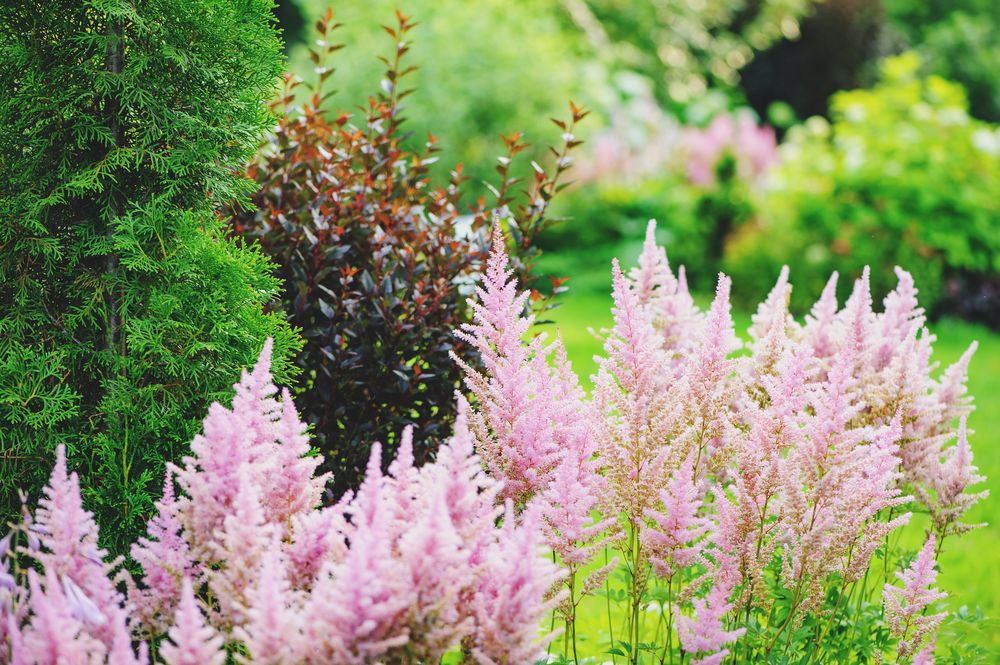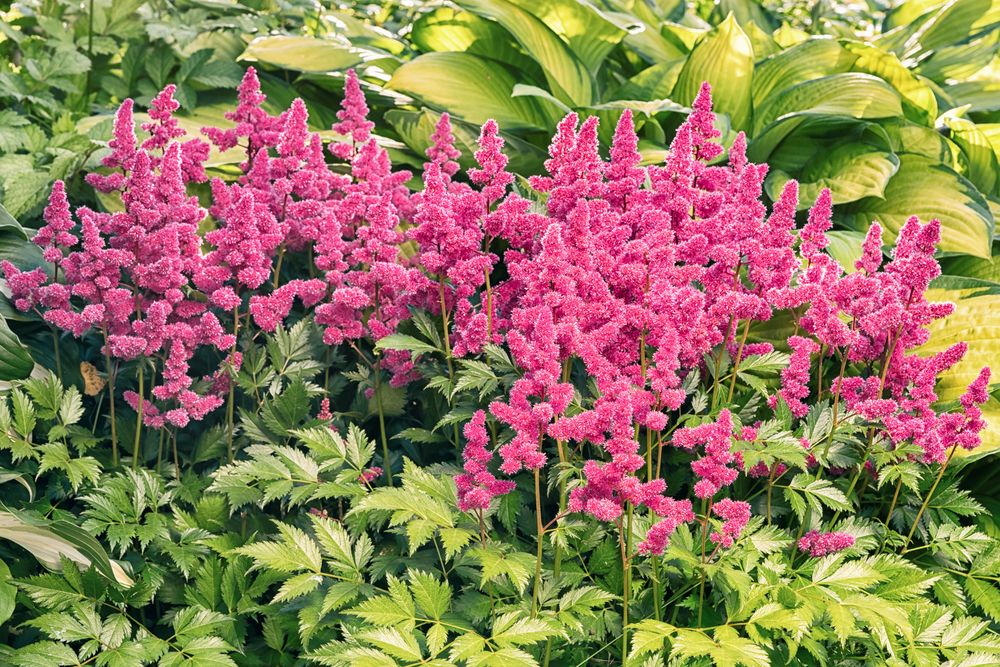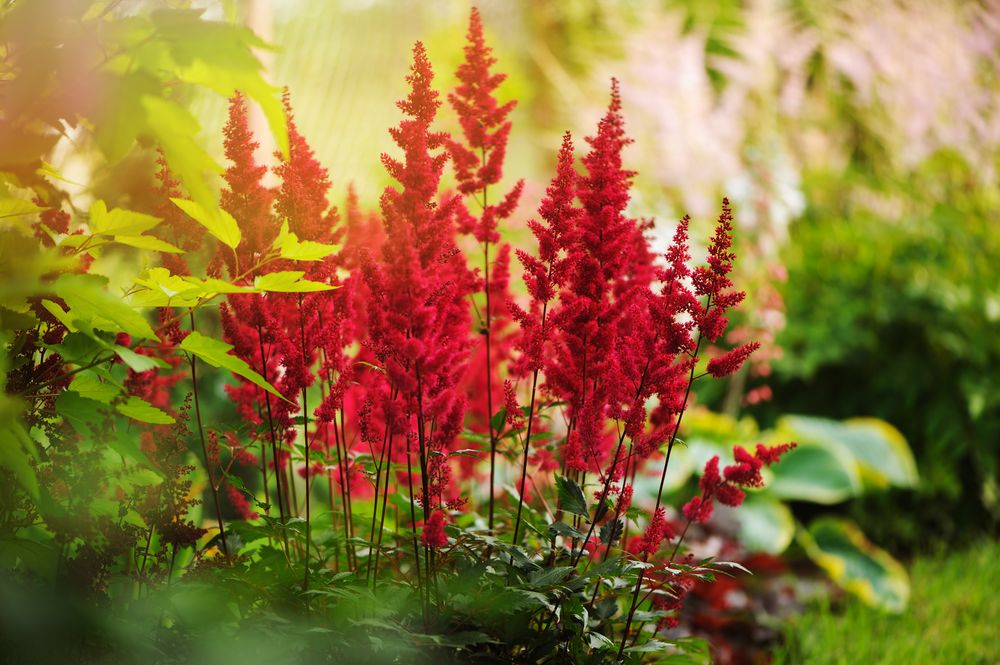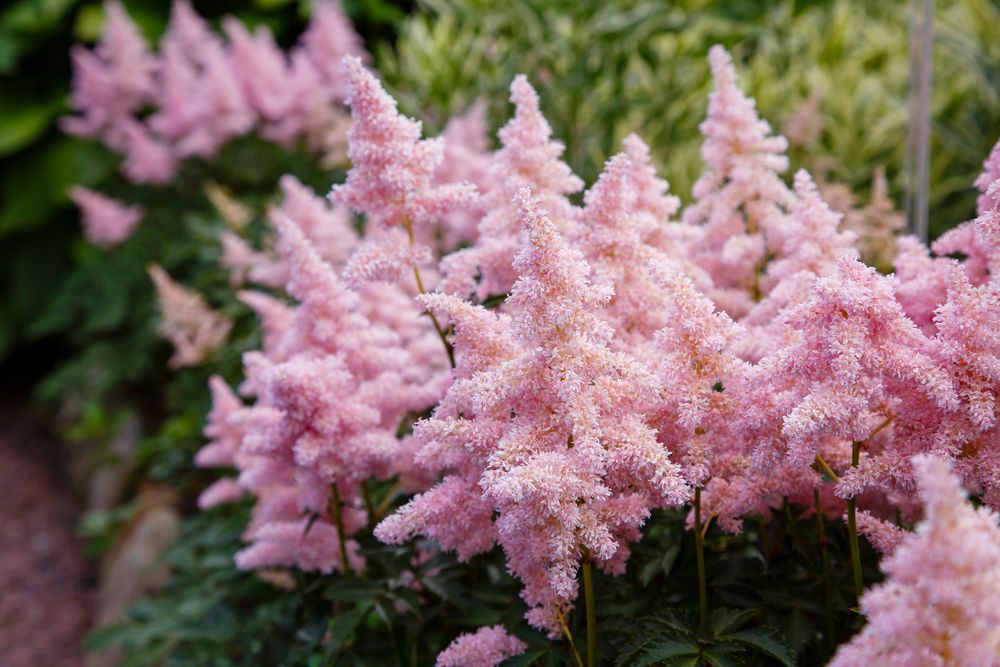Astilbe Growing Problems And How To Solve Them
For an ornamental, shade-loving plant, astilbe sure can give you a lot of problems. It’s not that the plant is finicky or anything. But it’s not the hardiest plant in the garden either. And to be fair, most of those astilbe growing problems are the result of inadequate care and the wrong growing conditions.
So it’s not unusual to see the leaves turning brown. Or it might stop blooming altogether leaving you with nothing but its green leaves all year round. And winter care is another issue if you happen to have a microclimate with extreme or close-to-extreme winter conditions. This can also affect the propagation of the plant.
We cover all of these astilbe growing problems and more with a few solutions thrown in for each problem.
Astilbe Is Turning Brown
When we say that the astilbe is turning brown we don’t just mean the leaves. The whole plant starts to lose its lush green colors and turn brown. Stems, leaves, and crown. It’s not the best look the plant has and you should be able to detect the onset of the color change to take swift action.
The causes for the brown color of the plant can be traced back to hot and dry conditions, foliar nematode, four-lined plant bugs, disturbed roots, or wilting. As you can see, the reasons vary widely and you got your work cut out for you. Starting from the weather, you’ll need to go down to the root level and check that you haven’t accidentally exposed the roots or disturbed the soil around them.
How to Fix It
For each one of those astilbe brown causes, there’s more than one solution. The tricky part of course is to find the real culprit behind the problem and to fix it quickly. Here are a few suggested solutions for this problem.
- Check if the brown discoloration affects just the leaves or the whole plant. If it’s only the leaves, you might be dealing with foliar nematodes. Remove the infected leaves, usually, these are the lower leaves, and spray the plant with a fungicide. Prune it to allow airflow inside the foliage.
- If it’s summertime and the weather is both hot and dry, there’s a chance the leaves are scorched. Water the plant regularly and only allow the top one inch of the soil to dry out between irrigations. You can also use mulching to improve the water retention of the soil and alleviate the impact of dry and hot weather.
- Check the leaves for signs of sunken brown spots. This is usually the work of four-lined plant bugs. Treat them with neem oil spray and remove the infected leaves.
- If you have recently transplanted the astilbe or dug up the soil around the roots, this could lead to the discoloration of the leaves. Water and feed the plant and wait for the green color to return.
- Check if there are sunken brown spots on the stem of the astilbe near the soil line. These are caused by wilt, a fungal infection. Treat the plant with a commercial fungicide.
Astilbe Bare Roots
A unique feature about astilbe is that when you go to buy it from the local nursery you might be offered the plant with bare roots. Not mud, no root ball, nothing. Just bare roots wrapped in peat moss or even just a piece of tarp. So what are you supposed to do with that plant?
Without the protective rootball, the roots will dry out quickly and become damaged. This can impact the growth of the plant or as a worst-case scenario could kill it. Naturally, you’d have to take some precautions to prevent that from happening. So how can you preserve the integrity of the root system of the young plant until you can safely plant it in the garden?
How to Fix It
Not all nurseries would hand you astilbe with bare roots. But some would do it and you need to act fast to keep the roots from drying out in the hot and dry weather. As soon as you receive the plant, pour some water over the roots to keep them moist while you prepare the soil.
Keep the package in a cool and shady spot away from direct sunlight. Then dig a large hole in the garden. Make sure it’s deep enough to take the root system and reach the soil line on the stem. The hole should also be wide because the roots shouldn’t be cramped or get entangled in the soil.
Ruffle the roots and trim off any damaged or dead ones. Place the plant in the hole and spread the roots to fill up the hole. Backfill with soil and water immediately. Cover the soil with a thick layer of pine needles or sugar cane to protect the roots from the hot sun.
Astilbe Won’t Bloom
Without blooms, your astilbe plants lose half of their ornamental values. What’s more, it takes a lot to keep this trusty perennial from blooming every year. The soil might not be acidic enough to the liking of the plant. If your astilbe used to bloom but then suddenly stopped, the soil pH might have changed.
Another reason might be changing light conditions. As a shade-loving plant, astilbe will get stressed under direct sunlight. That stress would impact its growth as well as flowering habits. But other factors cause stress too. Dry soil for example is a good explanation for stressed astilbe that won’t bloom. Or you might have used the wrong fertilizer or no fertilizer at all. And for every one of those causes, there are a few fixes that you need to apply one by one.
How to Fix It
Since the blooming window of astilbe is small, the chances of fixing the plant and triggering blooms that same year are minuscule. But once you get it fixed, the plant will be blooming next year without delay.
- Make sure the soil is loamy, well-draining, and rich. Amend it with perlite to improve its texture and drainage.
- Check the soil pH and add lime to increase the acidity until you get a reading between 6.2 and 7.0. Test the soil repeatedly during the growing season.
- Give the plant one deep watering once a week. This encourages deep root growth.
- Keep the plant under the shade of a large tree or a shrub. If the astilbe is no longer basking in full or partial shade, consider transplanting it to a more suitable spot.
- Feed the plant during the growing seasons. Avoid nitrogen-high fertilizers which trigger more root and foliage growth at the cost of blooms. Slow-release organic fertilizers are a good choice.
- Divide the plant once every three years to rejuvenate the root system and trigger more blooms every year.
Astilbe Companion Plants
Unlike veggies and fruits, you won’t have to worry about companion plants changing the taste or flavors of ornamental plants. Astilbe is one of the easiest plants to grow in the company of other ornamental plants. This is especially true if it has a deep root system which reduces the competition with neighboring plants over moisture and nutrients near the surface of the soil.
One requirement for companion ornamental plants, however, is that they should look good together. The color shades, the blooms, and flowering duration are all considerations to think over before you pair plants with astilbe. You wouldn’t want one plant to steal the show and keep the rest of the plants in its shadow.
How to Fix It
Since astilbe is mainly a shade plant, then you should pair it with ornamental plants that also love the same amount of shade. Soil acidity is another important factor. This perennial prefers the soil to be a little more acidic than other plants can put up with.
Some plants that fit these criteria include hostas, azaleas, and rhododendrons. They all love the partial shade and a touch of acidity won’t hurt them. You can also pair it with ferns, coral bells, trilliums, impatiens, and Japanese irises.
Astilbe Winter Care
For a plant that can grow in zones 3 to 9, astilbe sure doesn’t like cold winters. Especially when those winters come with frequent frost spells and freezing nighttime temperatures. But that doesn’t mean that the astilbe perennial is cold-sensitive. It wouldn’t be a perennial then. It would just call it a year by the end of the summer and start all over again from seeds in the spring.
Your job is to ease the plant into the winter and care for it during the long and cold months to ensure its survival. How would you achieve that?
How to Fix It
There are two tasks here and each is different from the other. The first is to prepare the perennial for the coming winter. You start by keeping the soil moist throughout the fall and until the first frost. Water it regularly and don’t let the soil dry out.
The next step is to protect the roots from the freezing temperature of the soil around the surface. Mulching is a good way to preserve the warmth of the soil. A 3-inch layer of fallen leaves and shredded bark will do the job.
The second task is to care for the plant during the winter. One easy way to do that is to cut the plant back to about 3 inches. This reduces it to just one stem stub sticking out of the ground. No other care is needed as long as you have mulch covering the soil.
Another way is to keep the branches and dead flowers on the plant throughout the winter. But in the spring and before the first signs of growth emerge, you’ll need to cut all the dead branches and remove the flowers to make way for new shoots and buds.
Astilbe Propagation Methods
Like many ornamental plants, astilbe grows well out of seeds. It’s not a cultivar, so the plant that sprouts out of the seed will look identical to its parent. But there’s another way you can start astilbe. You can divide it.
If you already have a mature plant over 3 years old, you can divide the rhizomes and start a new plant. Dividing is an important process whether you want a new plant or not. It helps rejuvenate the plant and trigger new root growth. So let’s take a look at how you can propagate this perennial.
How to Fix It
Starting astilbe from seeds is straightforward and doesn’t require any extra steps. Collect the seeds from the faded plants in the fall and wait until the next spring to start them. They germinate well in a tray. When the last frost is over, transplant the seedlings to the garden in a shady spot. Plants starting from seeds take longer to mature and flower.
The other way to start astilbe is by division. The new resulting plant will grow at a faster rate and produce blooms either in the same year or by the next year. Plant the new division in the same spot as the parent to avoid transplanting shock. In the spring, dig around the drip line of the plant to extract the rhizomes. Cut a healthy rhizome with a few roots attached to it. Plant it in a hole and cover it totally with soil then water it until it sprouts.



